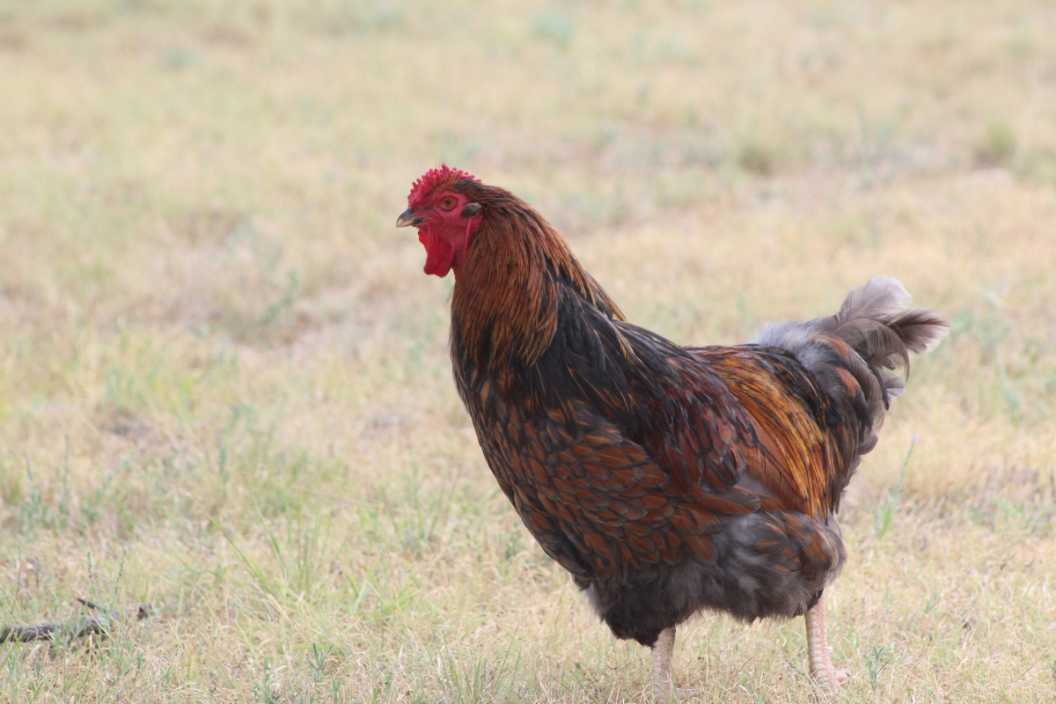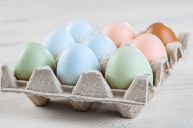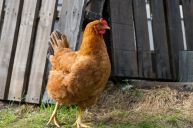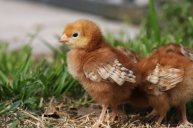Meet the beautiful Blue Laced Red Wyandotte!
Blue-laced red wyandotte chickens have a full breast and a slight dip in the tail and are very attractive. Their name comes from the blue lacing on the red feathers of the Blue Laced Red Wyandotte. Much like Rhode Island Reds, Wyandotte roosters are a calm, docile, and dependable chicken breed ideal for foraging in the wild. Wyandotte chickens are great mothers who pay close attention to their chicks, but the breed rarely broods and is unsuitable for a hatchery.
History
In the 1870s, the Silver Laced Wyandotte was created. Four men set out to design a more streamlined bird that could double as a dual-purpose chicken (a chicken that can be used for both egg and meat production). The Wyandottes were received with acclaim and quickly won over the poultry world, especially as free-range and backyard chickens. In the United Kingdom, people were ecstatic over this new chicken, a real American first.
However, the Blue Laced Red Wyandotte (BLRW) was believed to have originated in Germany in the late 1800s. There is written evidence that the variety was developed in the United States and only exported to the United Kingdom and perhaps Europe. The newest increase in success is undoubtedly due to the color mix with the dark blue gene in their feathering. This breed is praised for being a robust and consistent layer. Although not currently recognized by the American Poultry Association (APA), it's likely that this will change soon.
Appearance
https://www.instagram.com/p/CKXBsbxlNaZ/
Blue-laced red wyandotte chickens are beautiful chickens, with a full breast and a slight dip in the tail. Their heads are adorned with a rose comb, which is crimson like their wattles and ear lobe. Reddish chestnut feathers are laced with a gray or blue pigment on their back, breast, and sides. Their name is due to their coloration of blue lacing on the red feathers of the Blue Laced Red Wyandotte. As baby chicks, it can be hard to distinguish between roosters and hens. Hens should weigh about 6 pounds, and roosters should weigh about 8 pounds. The Wyandotte comes in various colors, but Blue Laced Red Wyandottes have a red feather with red lacing.
Egg Laying and Brooding
These chickens are excellent egg layers, laying about 4 eggs a week all year. Wyandottes lay large brown eggs, and the egg color will not change aside from some shade variation. Wyandottes will lay between 16 and 20 weeks (usually later rather than earlier). They are not known for being broody, and Wyandottes in general have fertility issues, making breeding difficult. When they are broody, though, they will gladly sit on eggs until they begin hatching.
Chicken Coop
Wyandottes are big chickens with a lot of fluff that will need 8 square feet of coop space each. On the roosts, try to allow them 10-12 inches of personal space. Since they do not fly, a regular 12x12 inch nesting box would suffice and provide the space they need for good egg production. If you have to keep them in a crate, they handle the containment of straight runs very well. Make sure they have at least 10 square feet for each chicken to allow them enough room to walk around. A 3-4 foot fenced area would hold them within the run. Leaf stacks, many perches at varying heights, and calm places away from the flock can all be of benefit. These beautiful birds also make good free-range foragers and are an excellent breed for a backyard flock.
Personality
Wyandottes are a chicken breed that is cool, docile, and dependable. They want to be around birds of their kind. They are not mean, so if another bird begins pecking on a Wyandotte, the Wyandotte will brush it off. They will love your company as they wander around the yard searching for snacks or assisting you with your gardens, although they make excellent mothers and are very attentive to their chicks.
The Wyandotte breed rarely goes broody and is not well suited to a hatchery, but they are generally polite to their keepers. They will augment their diet by foraging for nuts, bugs, and other tasty morsels. They do not get along with other breeds and dislike being moved around or picked on. They like running about and exploring the yard on their own, and they are very hardy birds that can handle cold weather and cold climates. Pullets can be a great addition to your homestead.
Share your favorite chicken breed on the Wide Open Pets Facebook page!




